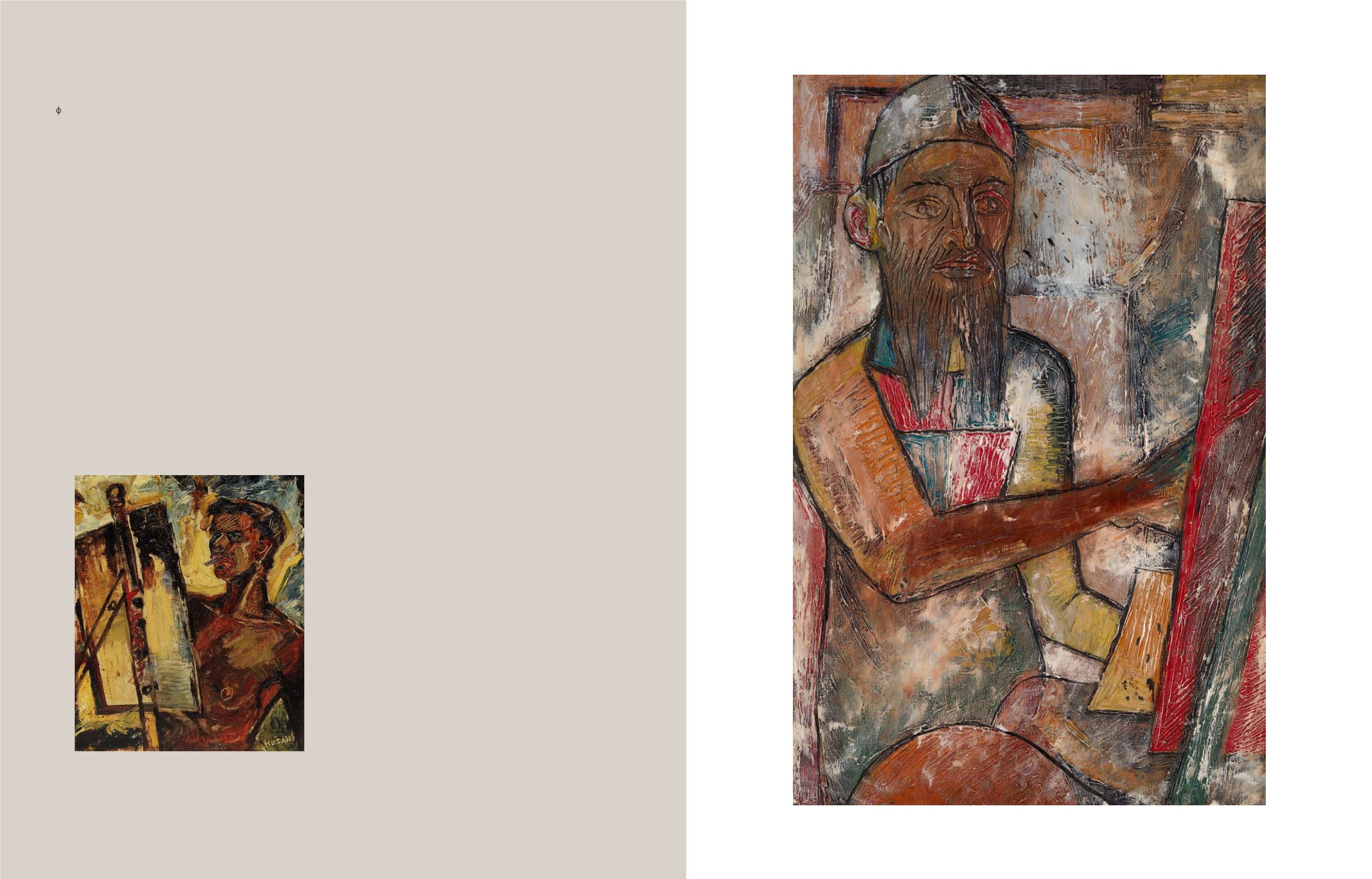

16
17
Husain’s reciprocal admiration of Souza is evident in his portrait of the
latter, painted in 1950. It was later exhibited at the National Gallery of
Modern Art, Mumbai, in 1996, as part of the inaugural show,
The Moderns
.
Reproduced from Yashodhara Dalmia,
The Making of Modern Indian Art: The
Progressives
, New Delhi: Oxford University Press, 2001, pl. 33
PROPERTY FROM AN IMPORTANT
EUROPEAN PRIVATE COLLECTION
5
F N SOUZA
(1924 ‒ 2002)
Portrait of Husain
Signed and dated 'F.N. Souza 1948' and inscribed
'Portrait of Husain (on the reverse)
1948
Oil on board
35.25 x 23.5 in (89.5 x 59.7 cm)
Rs 70,00,000 ‒ 90,00,000
$ 111,115 ‒ 142,860
PROVENANCE
From the personal collection of the artist
Bonham's, London, 16 June 1999, lot 42
This portrait of Husain was made by Souza shortly after
the formation of the Progressive Artists’ Group. “Although
the first exhibition of the Progressive Artists Group was
held in 1949, in the then Bombay city, the group came
formally into existence as early as 1947, in a meeting held
on December 15, (which was reported in ‘Blitz’ dated Dec.
20 of that year).” (Ratan Parimoo and Nalini Bhagwat,
“Progressive Artists Group of Bombay: An Overview, The
Spirit of Late 1940s and Early 1950s”,
Art Etc. News and
Views
, January 2012, online) Husain painted a portrait of
Souza at the same time, which was later exhibited at the
National Gallery of Modern Art, Mumbai, in 1996, as part
of the inaugural show,
The Moderns
.
In 1948, the same year in which the present lot was painted,
Souza and Husain visited the
India Independence Exhibition
at the Rashtrapati Bhavan in New Delhi. They were both
strongly influenced by the Gupta sculptures on display.
Along with Ara and Bakre, they also spent some time at
the Baroda Art Museum. They continued to exchange
ideas based on mutual interests in art even after the group
disbanded, and resorted to an epistolary friendship when
Souza left for England in 1949. In a letter written to all the
members of the Progressive Artists’ Group from London
dated 21 August 1949, Souza thanks Husain for his letter,
and calls him, “my best friend.” (Ashok Vajpeyi ed.,
Geysers:
Letters between Sayed Haider Raza & his Artist‒Friends,
The Raza Correspondence Vol. II
, New Delhi: Vadehra Art
Gallery, 2017, p. 15)
The present lot reveals Souza’s obvious respect for and
camaraderie with Husain. Some of the techniques, such
as the heavy black outlines, dark colour palette and thick
application of paint, are characteristic of Souza’s style. Yet
the portrait has no evidence of Souza’s angry, jagged lines,
arrows and pock‒marks, offering a rare lack of criticism and
an unusually respectful presentation of his subject. The
light, happier palette is one that is sometimes glimpsed
in some of Souza’s landscapes, but not often seen when
painting the human figure.


















